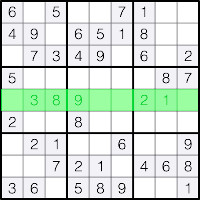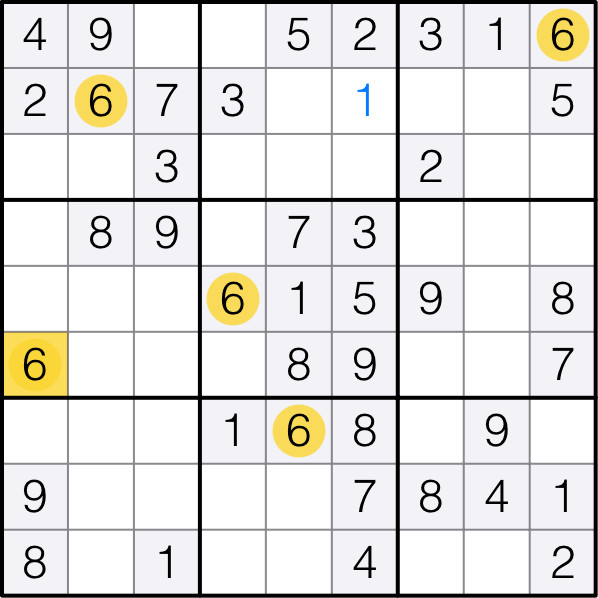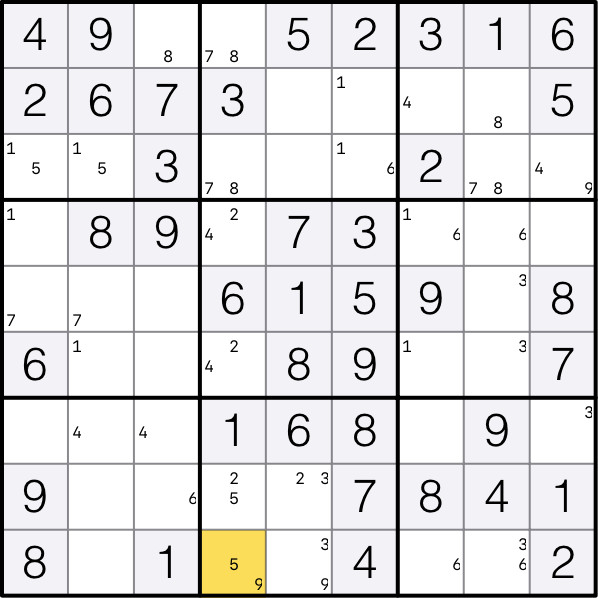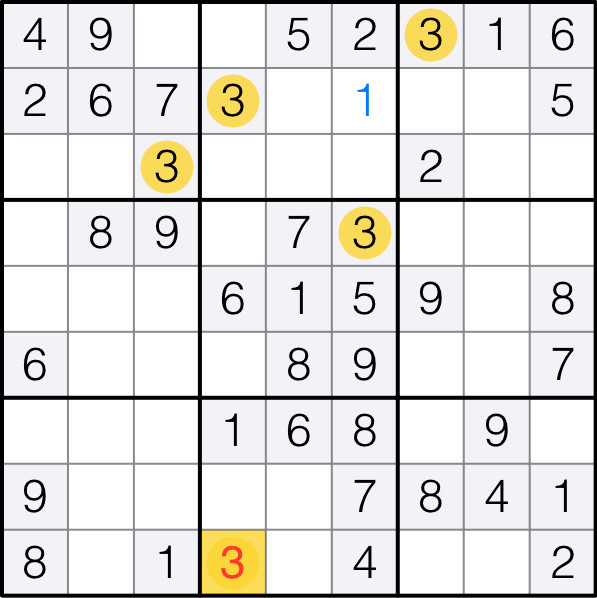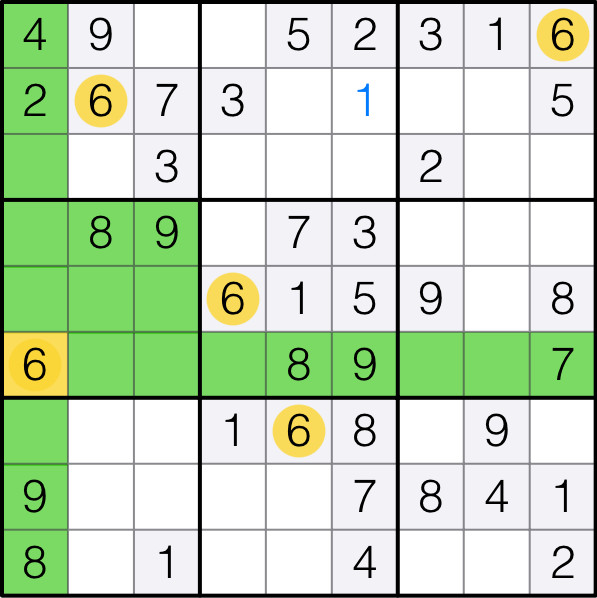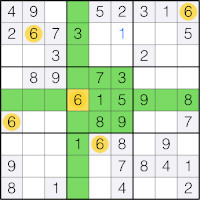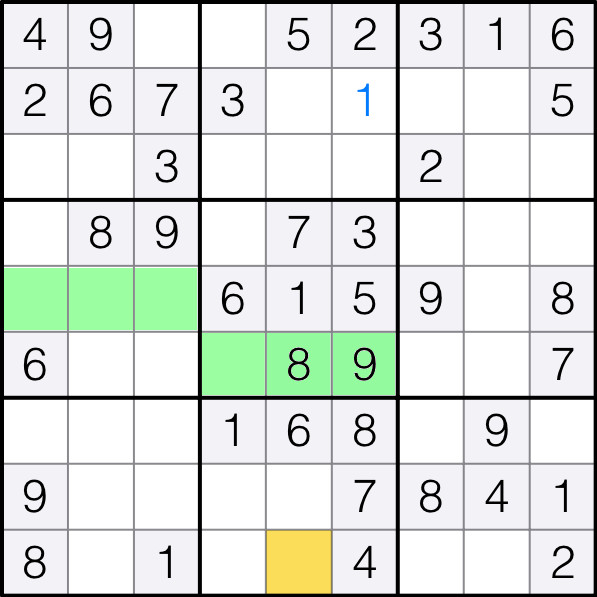Good Sudoku puzzles can be solved without having to resort to guessing, but to do so requires you to learn strategies that allow you to simplify the board and find the unique solutions to each cell. These pages will cover a number of these strategies using the algorithms implemented by the Sudoku Tutor app.
Strategies
The links below provide a detailed description of each strategy, as well as the ability to try them in the Sudoku Tutor app, so that you can practice each skill:
- Single Search Find all the cells on the board which can be only 1 value. This is the only strategy which does not require pencil marks.
- Pencil Marks Find all the candidates for each unsolved cell.
- Naked Single Find cells that can only have only one candidate.
- Hidden Single Find groups in which a particular digit has only one candidate cell.
- Naked Pair Find two cells that have only the same two candidates and are in the same group.
- Hidden Pair Find two cells that have the only two candidates for the same digits and are in the same group.
- Naked Triple Find three cells that have only the same three candidates and are in the same group.
- Hidden Triple Find three cells that have the only three candidates for the same digits and are in the same group.
- Naked Quad Find four cells that have only the same four candidates and are in the same group.
- Hidden Quad Find four cells that have the only four candidates for the same digits and are in the same group.
- Group Bound Find candidates which are restricted by a group, hence removing candidates from an intersecting group.
- X-Wing Find a digit in an x pattern of cells to elliminate candidates from rows and columns.
- XY-Wing Find 3 connected cells with exactly 2 candidates each.
- XYZ-Wing Find 3 connected cells with 3 candidates in the anchor cell and 2 in the wings cell.
- WXYZ-Wing Find a common candidate in 4 connected cells and elliminate it from the intersecting peers.
- Swordfish Find a 3x3, nine cell pattern with a candidate in 3 different rows/columns.
- Singles Chain Find a chain of single candidates to find which cells are the solution.
- XY-Chain Find a chain of cells with 2 candidates connected by a common candidate, to elliminate candidates where the chain starts and ends.
- X-Cycles Find a loop of single candidates by chaining alternating strong and weak links.



